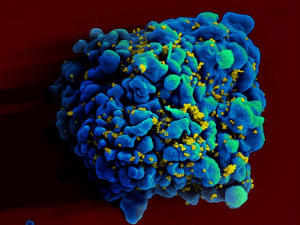Too much sodium in the diet can cause fluid retention and raise your blood pressure. Seasonings like soy sauce and teriyaki sauce, canned foods, processed meats, snack foods, pizza, hot dogs, pickles, cheese, and even frozen vegetables with sauce are high in sodium. Avoid them. Keep your daily sodium intake less than 1.5g.
Reduce salt intake
The best way to cut back on sodium is to avoid excess intake of salt. Fresh food contains only 10 percent of sodium and the rest comes from the salt used in cooking! Do not use salt substitutes since most of them contain high amount potassium, which is again a bad choice for kidney failure patient
Cut back on potassium
Depending on the stage of your kidney failure or the medication you are taking, you may need to change (reduce) the potassium intake in your diet. It is usually not restricted until urine output begins to decrease. Potassium levels of 6.5 or higher can lead to a cardiac arrest. Most foods contain potassium but the following should be avoided
Fruits:Apricot, banana, prunes, kiwi, melon, raisin, orange and orange juice.
VegetablesPotato, tomato, sweet potato, cooked spinach, baked beans, lima bean, kidney bean, pinto bean, and dried peas
Milk:Milk may not be the right choice
Avoid or limit milk or milky drinks up to half a pint per day if you are suffering from kidney failure. Milk is high in potassium content. In some people it may lead to milk-alkali syndrome wherein there is a shift in the body's acid-base balance towards alkaline because of high levels of calcium. This may permanently damage the kidneys since this condition is not reversible if one suffers from kidney dysfunction.
ReEliminate high phosphorus foods
Potassium is present in almost all foods. Unfortunately, control of phosphorus is very difficult in patients with kidney failure because phosphorus levels increase in the blood as the kidneys cannot remove it in the urine. Elevated phosphorus levels decrease the level of calcium in the blood leading to bone disease. It is, therefore, important to eliminate high phosphorus foods such as milk, beans, black eyed peas, lima beans, chocolate, and milk products viz. yogurt, cheese and desserts made with milk.
Read he right choice Fast foods and processed foods are a strict no-no
Many studies have found that phosphorus-containing additives are increasingly being added to processed and fast foods. These have deleterious consequences for kidney failure patients. For example, a Cleveland study published in the JAMA found that limiting the intake of phosphorus containing food additives moderately improved hyperphosphatemia (high phosphorus levels) in renal patients. Normally, 800mg to 1g of phosphorus is the daily limit for people with kidney disease
Restrict protein consumption
Although protein is an essential part of a diet, the waste products from the protein breakdown is cleaned from the blood by the kidneys. So, eating more proteins puts extra burden on the kidneys leading to faster decline in kidney function. It is better to avoid high protein animal foods such as ground beef, halibut, salmon, tuna and chicken breast and substitute them with lower protein animal and vegetable alternatives. The National Institutes of Health (NIH) recommends 'limiting meat in your diet to two 3-ounce servings each day' and using thinner slices of meat in the sandwich.
Stay away from saturated fats and trans-fatty acids
Bad fats can raise your blood cholesterol levels and cause heart disease. Saturated fats are found in red meat, poultry, whole milk, butter and lard. Trans-fatty acids are found commercial baked goods, French fries, doughnuts and all hydrogenated vegetable oils. Use healthier fats, especially, if you need more calories.Limit fluids
To prevent fluid and waste from building up in the body, it is necessary to restrict fluids as one of the main functions of the kidney is to get rid of excess fluid (water). Excess water in the body, termed as fluid overload, causes high blood pressure and may lead to heart disease. Drink only as much water as the amount of urine you make. Dealing with fluid restriction can be difficult, so, sucking an ice cube or chewing gum can keep thirst under control.
Say no to alcohol
Drinking alcohol can damage your kidney cells further. It causes the kidneys to increase urinary output which can lead to dehydration. It also raises the chances of developing high blood pressure and increases diabetes risk. A review study from Florida found that alcohol can disrupt the hormonal control mechanisms that govern kidney function and alter the body's acid-base balance. Even beer and wine are harmful for your kidneys .it milk or milky drinks up to half a pint per day if you are suffering from kidney failure. Milk is high in potassium content. In some people it may lead to milk-alkali syndrome wherein there is a shift in the body'
 A new software program developed by a team of computer scientists watches a user's movements and gives spoken feedback on what to change to accurately complete a yoga pose.The program, called Eyes-Free Yoga, uses Microsoft Kinect software to track body movements and offer auditory feedback in real time for six yoga poses, including Warrior I and II, Tree and Chair poses.
A new software program developed by a team of computer scientists watches a user's movements and gives spoken feedback on what to change to accurately complete a yoga pose.The program, called Eyes-Free Yoga, uses Microsoft Kinect software to track body movements and offer auditory feedback in real time for six yoga poses, including Warrior I and II, Tree and Chair poses. 










